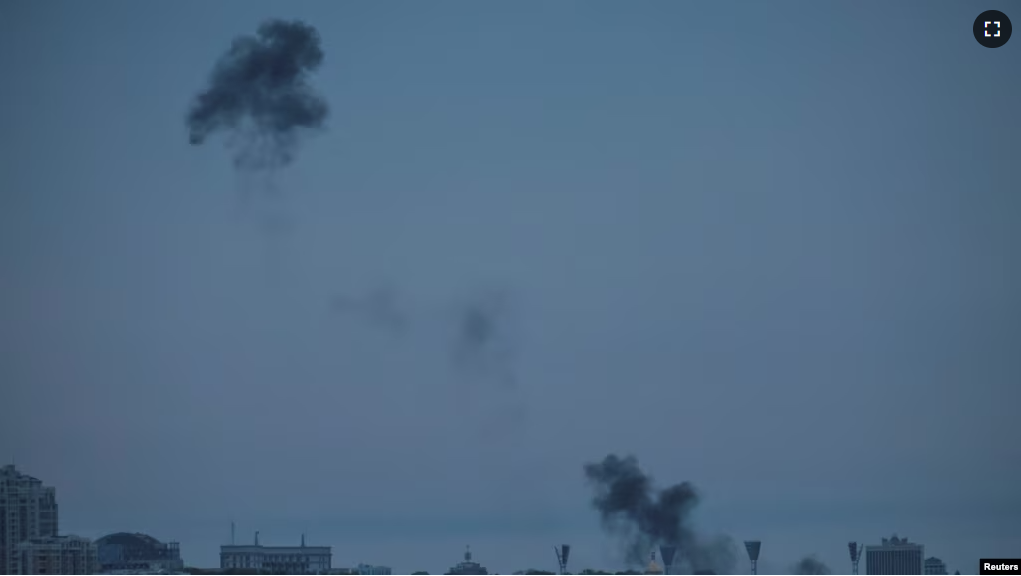The war in Ukraine is worsening the climate crisis, a new report says.
A group of researchers will present the report this week at the United Nations climate meeting in Bonn, Switzerland. The scientists report that the first 12 months of the war will lead to increased production of waste gases that heat the planet. They say they expect the increase will amount to about 120 million metric tons of gas emissions, or release. That is equal to a year’s worth of emissions by the country of Belgium.
Dutch expert Lennard de Klerk is the lead writer of the report, Climate Damage Caused By Russia’s War in Ukraine. He led a team of researchers investigating the creation of war-linked emissions. The causes include fuel use for vehicles, forest fires, changes in energy use in Europe and the future rebuilding of buildings and roads.
“We didn’t expect the emissions of war would be so significant,” said de Klerk by phone from his home in Hungary near the border with Ukraine.
Carbon accounting will be an important subject of discussion at the COP28 climate meeting in Dubai this year. Countries will measure progress against climate goals agreed to in Paris in 2015. De Klerk said it was very important that military emissions were included.
“The aim that we all should have is to get to net zero (carbon emissions) by 2050, including the military, but if you don’t know what the military emissions are, it’s very difficult to start work on policies to reduce them,” de Klerk said.
The European Climate Foundation and the Environmental Policy and Advocacy Initiative in Ukraine paid for the research and report.
Almost half of the estimated increase in emissions since the Ukraine war started in February 2022 is connected to the expected rebuilding and repairing needs. The fighting has destroyed or damaged many roads, factories and other structures and systems.
About 19 percent of the emissions come from military activities like vehicle fuel use, making and firing weapons and building defensive structures.
The total also includes planet-warming gas production linked to the conflict but happening outside Ukraine. That includes gas leaks from the destroyed Nord Stream pipeline, the redirects of international flights and the movement of refugees.
The report said there had been a drop in Ukraine’s own economic activity due to the conflict. But it said emissions related to those activities had mainly moved to other countries.
The report also said there was a drop in emissions in Europe linked to lower flows of Russian gas and a drop in electricity usage from higher energy costs. But that decrease had almost all been offset by increases in the use of oil, coal and liquified natural gas.
Carbon accounting expert de Klerk said government reports on military-linked emissions are often unclear and inexact. Emissions created by armies in foreign territory are not counted, and annexed territories are sometimes double-counted, he said.
Other studies have attempted to measure emissions from conflicts.
A project called Costs of War at Brown University in Rhode Island measured emissions from American military activities outside the U.S. between 2001 and 2018. The researchers reported that the U.S. military’s activities in Pakistan, Afghanistan, Iraq and Syria created 440 million metric tons of emissions.
I’m Dan Novak.
Dan Novak adapted this story for VOA Learning English based on reporting by Reuters.
_______________________________________
Words in This Story
significant — adj. large enough to be noticed or have an effect
liquefy— v. to cause to become liquid
annex — v. to take control of a territory or place
